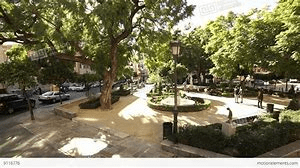
Evolutionary Change and Organizational Innovation: Implications for Coaches and Their Leader Clients
A large organization, by contrast, will often devote as much as 90% of its resources not to production or provision of services, but to the overall maintenance of the organization (management, communications, coordination, etc.). As an organization grows larger (and older) it takes much more time, attention and people to hold the organization together—especially if the organization operates within a hierarchical structure rather than allowing self-organizing dynamics to prevail (an idea first promoted by Ilya Prigogine and later described in greater detail by many chaos and complexity theorists and researchers, such as Scott Page and Steven Strogatz, and made accessible by Margaret Wheatley in Leadership and the New Science) (Prigogine, 1984; Strogatz, 2003; Wheatley, 2006; Page, 2011)
Applications
In order to promote organizational innovation, a coach should encourage and guide her leader client in the management of growth and size within their organization (recognizing that most organizational problems can’t be solved simply by growing larger). She should also encourage her client to consider growth not in the size of their organization, but in the number and diversity of cooperative and strategically collaborative agreements they have with other organizations. (Bergquist, Betwee and Meuel, 1995; Kanter, 1997, Chapter 20)
Preferences and Distinctive Contributions
There will be little evolution if mating within a specific species is random. If members of a species show preferences for specific characteristics in those of the opposite sex, then evolution is more likely to occur.
Implications
Life in an innovative organization isn’t fair. Some people seem to be doing a better job and are coming up with more ideas than other people. In his assessment of diversity and complexity, Scott Page proposes that: “systems need competition to flourish and diversity increases competition.” (Page, 2011, p. 217) “Absent competition” concludes Page, “entities—be they firms, species, political parties, or ideas –may lack pressure to improve or respond to changes on the landscape. . . .[D]iversity provides the seeds for innovation and thus . . . pulls toward more pressure.” (Page, 2011, p. 216) This emphasis on competition and preference for the fittest certainly doesn’t appeal to our sense of fair play and may even contradict the societal values of democracy. However, it might be critical to the promotion of innovation and organizational change.
What is the distinctive contribution to be made by each member of the organization and by each functioning unit of the organization? How do we take full advantage of the distinctive strengths of each member and unit – while also recognizing that these distinctive strengths can get the member, unit (and overall organization) in trouble if overused or used inappropriately. The answer to these questions in part resides in the analysis of the fifth assumption in the Hardy-Weinberg Model—with specific emphasis being placed on an organizational culture of appreciation (Srivasta, Cooperrider and Associates, 1990; Bergquist, 2003; Cooperrider and Whitney, 2005; Bushe, 2010).
- Posted by Bill Bergquist
- On September 15, 2012
- 0 Comment

Leave Reply